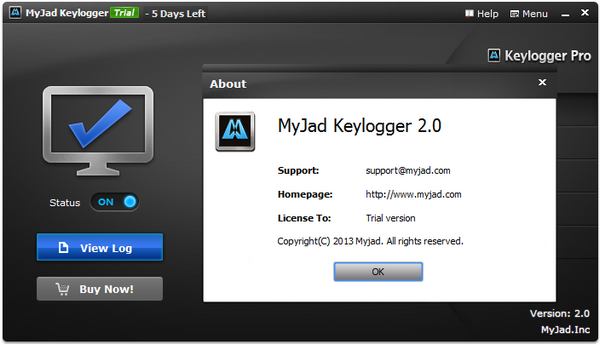고정 헤더 영역
상세 컨텐츠
본문
Keyloggers, as the word itself suggests, function by logging or capturing keys or key strokes. Technically, a keylogger is a software tool or program which is used to capture key strokes that a user presses in real time. Further processing depends on the nature of the keylogger, whether it is a physical or remote keylogger. The technique of capturing key strokes is called keylogging.
It’s hard to believe, but keylogging is the easiest method to hack someone’s password. All you need is a good keylogger, a good crypter, and the knowledge to spread your keylogger program.
Thousands of keyloggers are available online for free, but all of these are either detectable by antivirus or, ironically, have a virus attached to hack the user. Clearly, we need to be cautious when using freely available keyloggers or cracked versions of paid keyloggers. But why should you become prey to other hackers when designing your own is damn easy?
Most novice hackers or “script kiddies” think that coding a good keylogger is a difficult and tedious task but believe me, after reading this tutorial, it will become a routine task for you to code a keylogger. Today, I will teach you the inward and outward logic of keyloggers. I have divided keylogger coding into a few parts to make it easier for Hackingloops users to properly understand. Let’s start by learning how to code keyloggers in C stepwise. As you all learned above, keyloggers capture keystrokes.
There are several methods for capturing keys, such as capturing the keyboard API input and output: these are called API based keyloggers. You can also simply capture the keys after they get decoded by your OS. The hardware keyboard sends instructions to OS drivers, which decode every key pressed on the keyboard into useful alphabets. FILE.OUTPUTFILE;OUTPUTFILE = fopen(file, “a “);cout.
I happen to have the ‘good fortune’ of having more than one Apple Fanboy amidst my network of associates and they are all downplaying the latest round of Flashback-based malware infections on the Mac as being ‘unusual’ and ‘nothing to worry about’ and they still insist that installing anti-malware software is pointless. Same thing they have been telling me for just about a decade.Contrary to what the Fanboys say, Mac OS X has been hit with viruses and worms in the past.
Spyrix Mac Keylogger
Flashback is not the first. Malware specifically targeting the Mac OS X platform starting appearing as early as 2004. Apple computers have never been ‘immune’ to malware and spyware, contrary to Apple’s advertising, and Apple computers have been part of the earliest history of virus development, beginning with Elk Cloner which predates the first PC virus “Brain” by about 4 years. Yes, owners of Apple products had to worry about viruses four years before PC users didHere’s the a small sample of the kinds of malware targeting Apple computers that I could dig up in a quiet evening at home from the web. This list of Apple Malware is far from complete:. 1982 – Mac Virus Elk Cloner (created by Richard Skrenta). A boot sector virus attacks the Apple II.
This predates the first virus on Windows computers, so Apple computers got viruses before PC’s did. Dwindling market share protected the Apple computers–just wasn’t worth the hacker’s effort. 1992 – – Triggers on Friday the 13th on any computer running MacOS (pre-OS X). 1994 – Mac Virus INIT-29-B modifies system files and applications, crashes the early Macs. 1995 – HyperCard Virus HC-9507 embeds itself in all HyperCard stacks. 1987 – nVIR Virus. Spread by infected floppies.

1988 – HyperCard viruses start appearing. 1990 – MDEF (Garfield) infected the operating system files. 1998 – Hong Kong / AutoStart 9805 infects via the AutoPlay feature of QuickTime.

1998 – Sevendust / 666. 2004 – OSX /Renepo (opener) script worm. 2006 – OSX/Leap-A (OSX.Oomp).
First ‘official’ Mac OS X virus.




